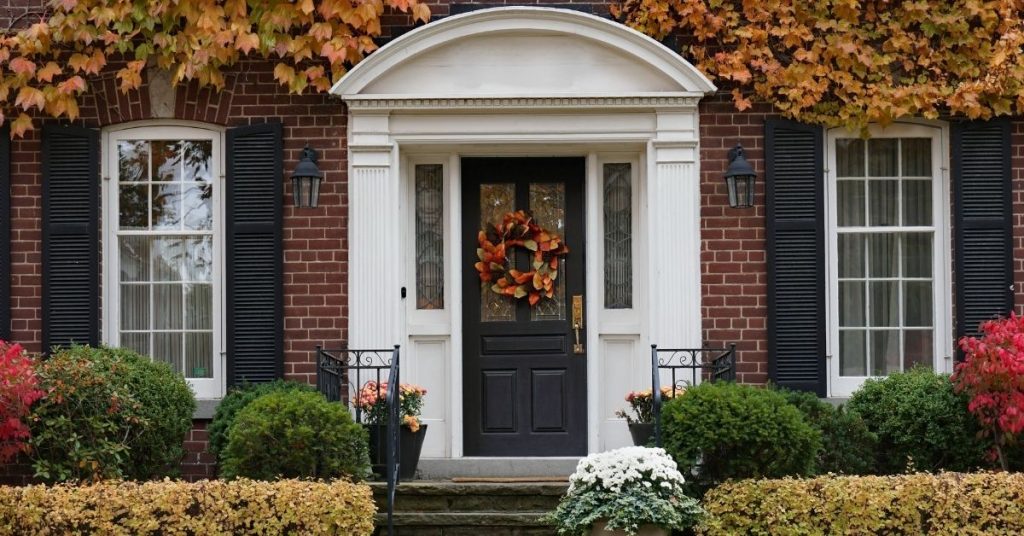Fiberglass doors are a great alternative to wooden doors for a number of reasons. For starters, because of the materials used to make these doors, they can easily emulate the regal elegance of wooden doors for a fraction of the cost. In addition, these doors can be customized to fit a wide range of styles and finishes in order to mimic the look and feel of wooden doors.
This is great because not only are fiberglass doors easy to maintain, they are also extremely durable in comparison. External factors will not warp the doors, nor will they rot, shrink or swell due to the outdoor climate. They are also highly resistant to insects as well as fires. Since fiberglass doors are also personalizable, it makes them a practical entry door solution for any home. So let’s take a closer look at the makeup of these doors and explore why these guts of fiberglass doors make these entry doors such a desirable option for homeowners.
Materials That Makeup Fiberglass Doors
Fiberglass doors consist of three main components: the frame (stiles and rails), the core, and the skin. The stiles run from the top to the bottom on either side of the door, while the rails make up the top and bottom support of the door. The frame itself is made from wood or high-strength composite material, depending on the manufacturer.
The core is filled with polyurethane insulating foam, which not only protects you from the climate outside your home but also acts as a soundproofing barrier. This section is basically what makes the door durable.
The skin of the door, on the other hand, is made from high-impact compression-molded fiberglass. This is often covered with an artificial grain to give it that real wood appearance. For example, if the manufacturer wants to mimic the look of a mahogany door, the mold for the fiberglass will be designed with the mahogany grain.
The Benefits of these Materials
Apart from cost, these doors offer a wide range of benefits upon installation. Due to the insulating foam, fiberglass doors are typically energy-efficient. This simple fact helps you gain a greater return on your investment, as these types of products help you save energy, and in turn, money, in the long-run. It’s worth noting, however, that if the fiberglass door has a window (even if it’s a low-e glass), it is less efficient.
Another great advantage that comes from having fiberglass doors is its low maintenance. Unlike wood, fiberglass doesn’t expand or contract. The temperature hardly affects the build or look of the door – whereas with wood doors, the outdoor climate can easily alter the make. Simply use a damp cloth to clean the doors from time to time. That is unless your door faces the sun, has a dark finish or has no sheltering overhang. In this case, it may be ideal to invest in a restorative top coat of clear marine varnish, or paint, because that can help prevent fading.
Its stability of keeping its form in spite of the weather surrounding it is another excellent benefit. As mentioned earlier, fiberglass doors do not warp, crack, rot or split. Furthermore, they are corrosion and rust-free, and can withstand extreme temperatures. This means that these doors won’t shrink and swell as wooden doors normally would. If you live in a location where the weather changes every few months, this is an ideal pick. Fiberglass doors do not stick in the heat, nor do they let the draft in during the winter months.
The Cons
Unfortunately, fiberglass doors have a few drawbacks that may derail people from installation. Unless you’re willing to dish out a lot of money to create a fully customized door, you will be left picking a fiberglass door from the available sizes and options. Another fault this material has is that it is following standard manufacturing protocol. The door only fits square slabs. So if you’ve got a curved door opening, you’ll have to use a different type of door – or you can trim the fiberglass.
Although, not all fiberglass doors can be trimmed and some can only be trimmed by half an inch on each edge. Lastly, even though fiberglass doors do not warp, rot, or even dent – the skin can certainly crack. The only upside to this flaw is that you can use a filler to fill the gap and patch up the area by graining and sanding in order to refinish the door.
While fiberglass doors have their fair share of competitors (i.e. wood doors, steel doors, etc.), they are unmatched in terms of their energy-efficiency, durability, and aesthetics. The very fact that they are low-maintenance and can still provide you with high-resistance against wear and tear is reason enough to get them. Furthermore, these doors are extremely secure and can essentially last you a lifetime.
Conclusion
At Luma, we carry a wide range of beautiful fiberglass doors. Not only have we been building these doors in Canada for many years, but we also ensure the highest quality products at the most affordable prices. If you’re looking for entry doors that are functional in a way where it can act as a firewall between you and the outdoor climate – look no further. Our team of professional experts will be happy to help you find a fiberglass door that fits with your home all the while meeting your needs and expectations. Give us a call at (905) 303-0560 and find your perfect match today.
